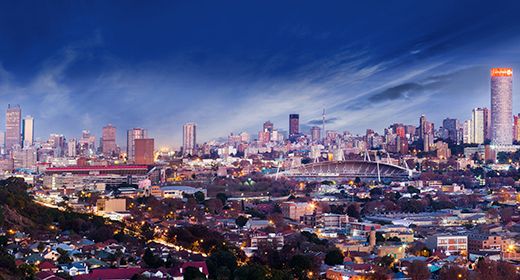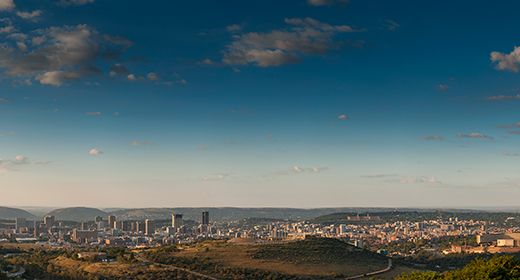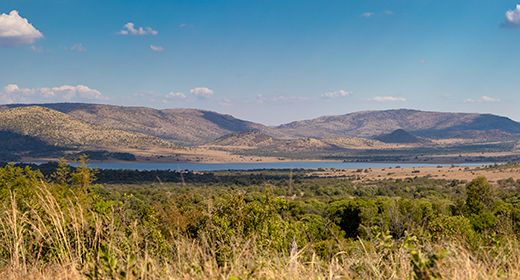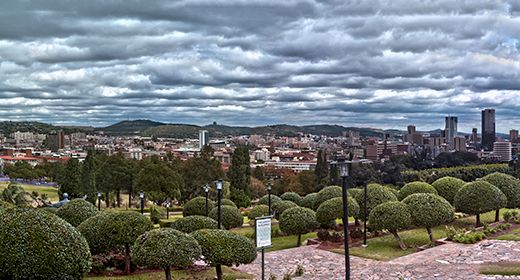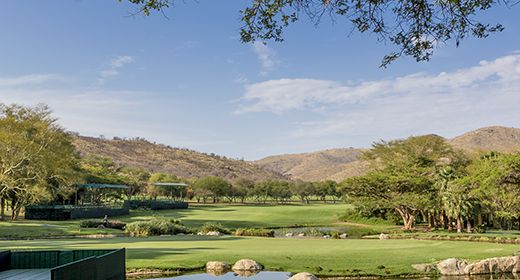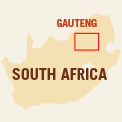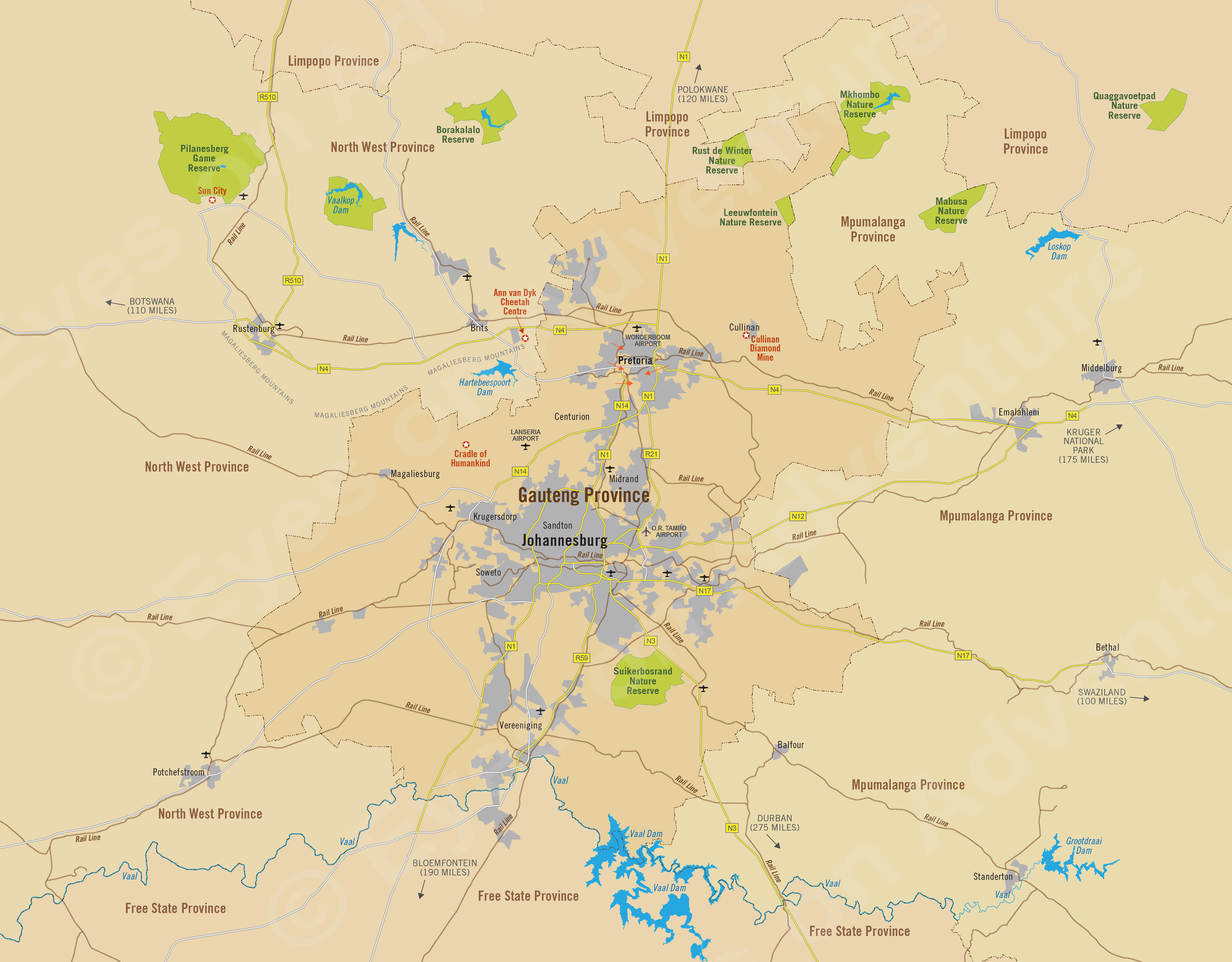Gauteng Province
(incl, Johannesburg, Pretoria, Pilanesburg, Sun City)
Region Links: Cape Peninsula, Cape Town, Cape West Coast, Cape Winelands, Eastern Cape, Garden Route, Gauteng Province, Johannesburg, Kruger Park & Lowveld, Kruger Private Reserves, KwaZulu-Natal, Madikwe, Overberg & Whale Coast, Pilanesberg & Sun City, Sabi Sand Reserve
Highlights
- Visit Pretoria, the administrative capital of South Africa
- Take a guided tour of Soweto, Johannesburg's well-known township
- Tour the Cradle of Humankind World Heritage Site
- Visit the Apartheid Museum to learn about South Africa's history
- Go on a safari in Pilanesberg Game Reserve
EOA Recommends: 131 on Herbert Baker Boutique Hotel, Blue Train, Mount Grace Country House & Spa, Rovos Rail
Guateng is South Africa's richest and most progressive province and home to Johannesburg and the country's capital city of Pretoria. The name mean's "Place of Gold" owing to the rich deposits that have been mined here since its discovery in 1886.
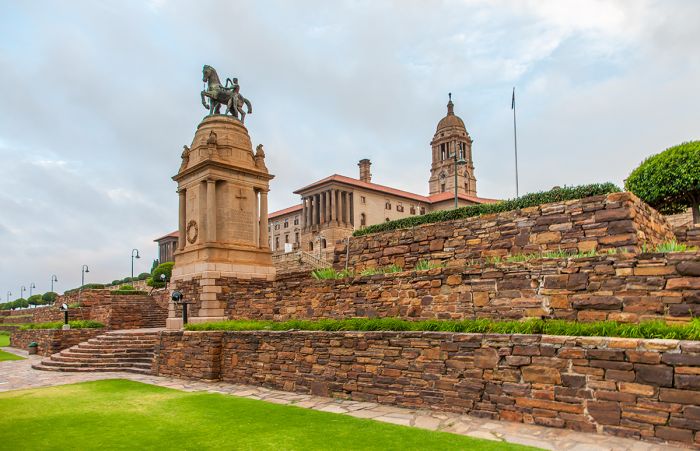
Union Buildings in Pretoria, built in 1901
Prior to the gold rush in the late 1880s, the region was mainly uninhabited farmland. Today, Gauteng contains over 20% of South Africa's population in less than 2% of the country's land area.
Johannesburg (also known as Joburg) is the gateway city for the entire southern African region via O.R. Tambo International Airport. However, most tourists do not spend more than a day or two in Joburg.
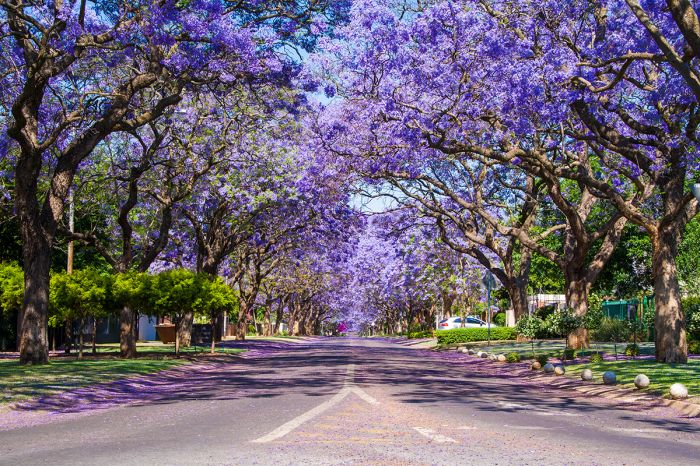
Jacaranda trees line a street in Pretoria
That said, Johannesburg is worth spending a day or two to see places such as The Apartheid Museum, Soweto (the country's most famous black township) and The Cradle of Humankind World Heritage Site to the northwest of Joburg.
Pretoria is also worth a visit, if only to see some of its historical buildings and museums. Those who wish to tour more of the country can opt for luxury train travel, departing from Pretoria on Rovos Rail or the Blue Train.
Pilanesberg Game Reserve and Sun City are popular getaways for locals and tourists alike for golf, safaris, gambling at the casino, and more.
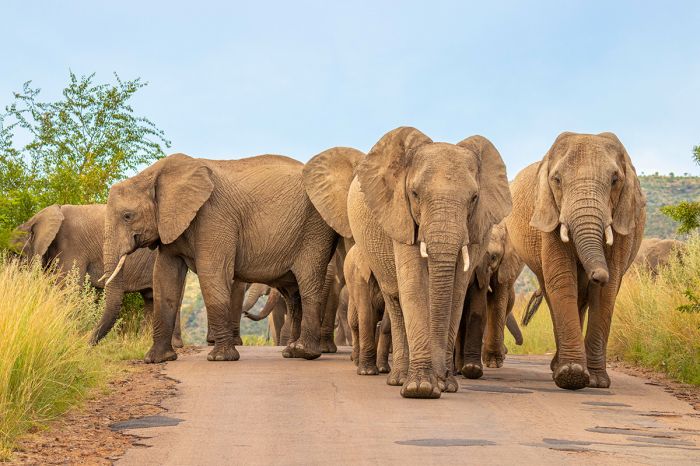
Elephants in Pilanesberg Game Reserve
The Magaliesberg Mountains, which are more hills than big mountains, are a popular destination for locals more so than tourists, but are worth considering for their natural beauty and outdoor activities, especially hiking. Hartebeestpoort Dam is a water-sports haven.
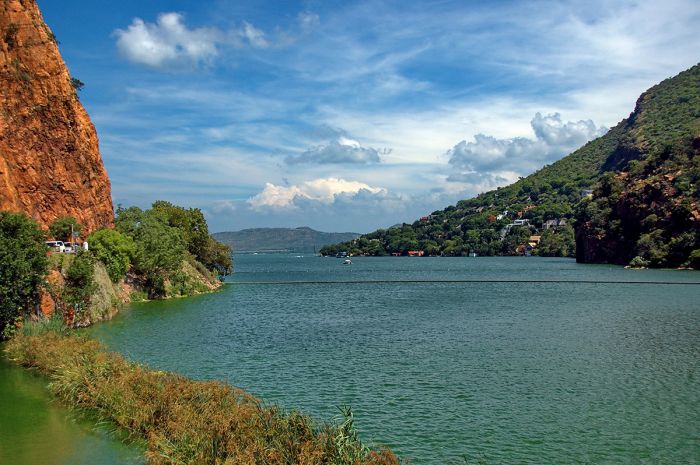
Hartebeestpoort Dam lake
Read More...
Ann Van Dyk Cheetah Centre, Cradle of Humankind, Johannesburg, Magaliesberg Mountains, North West Province, Pilanesberg Game Reserve, Pretoria, Sun City
Johannesburg
Johannesburg (known locally as Joburg) is the South Africa's most populous city, with between 8 and 11 million people depending on the numerous suburbs included. It is also the country's most visited destination and its O.R. Tambo International Airport is the gateway city for all of southern Africa.
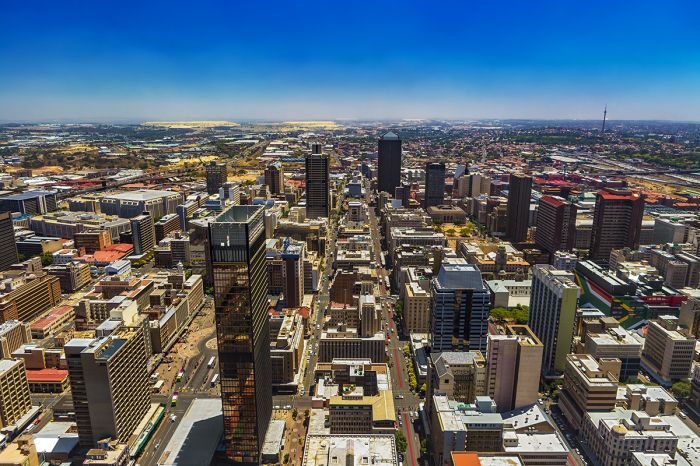
Downtown Joburg
Most tourists only stay in the city for a day or two, mainly for overnights on the way in and out of the country. However, Joburg does offer some interesting places to see and some of the best shopping on the continent.
The northern suburbs, and in particular Sandton, offer excellent hotels and guest houses, as well as flea markets, art galleries, and upscale shopping malls.
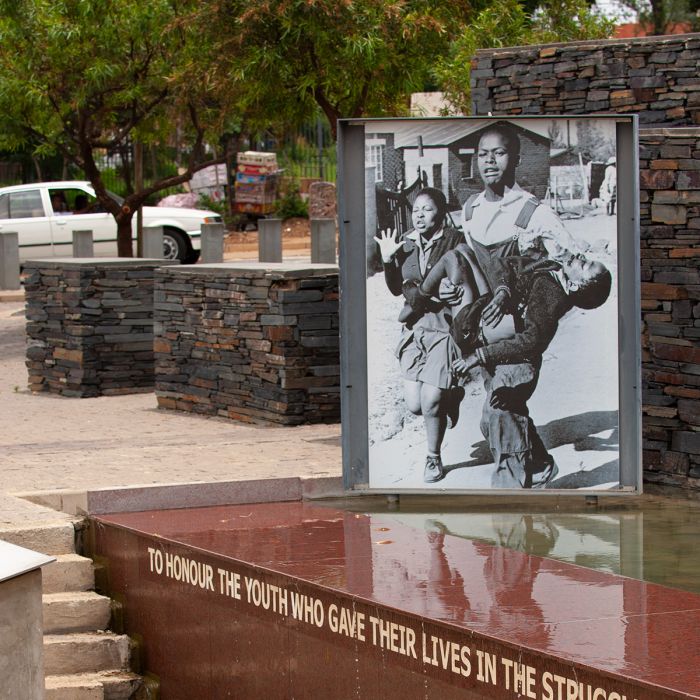
The Apartheid Museum in Joburg (Copyright © James Weis)
Popular attractions in and around Joburg include guided tours of Soweto (South West Township), the Apartheid Museum (highly recommended), and The Cradle of Humankind (located only an hour northwest of the city).
The city's modern commuter rail system, the Gautrain, connects the airport with the northern suburbs and all the way to Pretoria.
For full information on Johannesburg. click here.
Pretoria
Founded in 1855, the city of Pretoria is South Africa's administrative capital and is named for Andries Pretorius, an Afrikaner and leader of the Boers, who fled from the Cape in the 1830s to escape British rule.
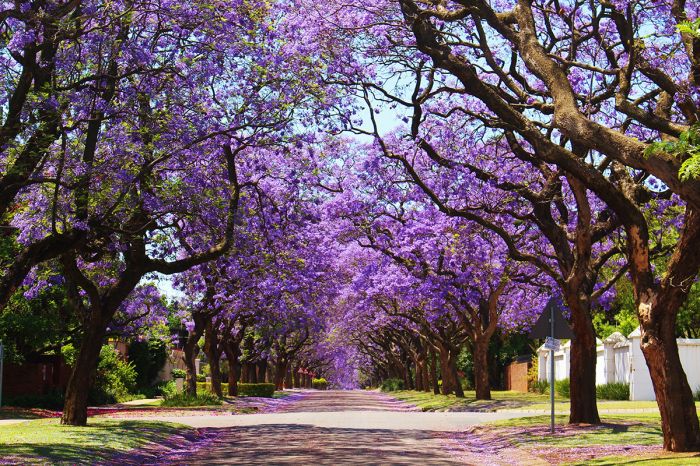
Jacaranda trees on a residential street in Pretoria
Pretoria is sometimes referred to as the "Jacaranda City" for the many thousands of jacaranda trees that grow throughout the city. The lovely lavender and purple blossoms are a spectacular sight to behold when they flower in October and November.
Once the heart of the Afrikaaner regime, the city offers lovely old architecture, historical monuments (many from the Apartheid era), museums, zoological gardens, and lovely suburban neighborhoods lined with jacaranda trees. Despite its past, the city is undergoing something of a renaissance, with an influx of foreign embassy employees and civil servants of all races.
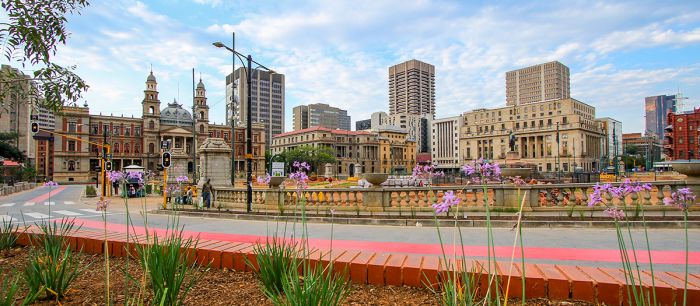
Church Square in downtown Pretoria
Pretoria is one of South Africa's academic cities, with three universities: University of Pretoria, University of South Africa, and Tshwane University of Technology.
The Cullinan Diamond Mine and the town of the same name that sprung up around it, lies 30 kms (18 miles) outside of Pretoria. The mine gained fame for the discovery of the largest diamond ever found, the 3106-carat 'Star of Africa" (or Cullinan Diamond). Tours of the mine are offered.
Pretoria can be reached by road from Johannesburg in about an hour (2 hours on bad traffic days) and the Gautrain rail system will get you there in 35 minutes.
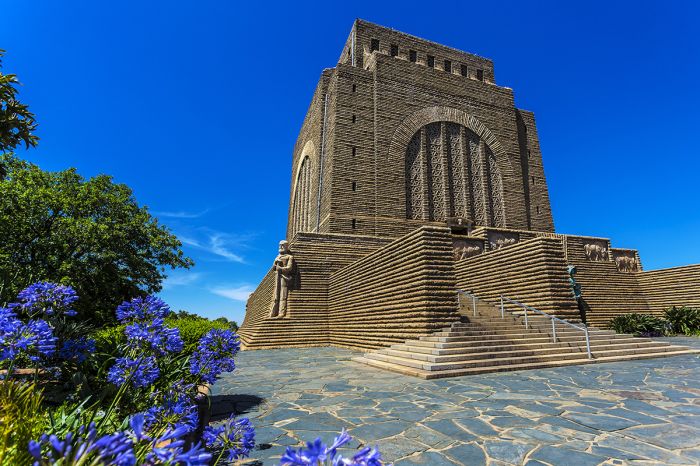
The Voortrekker Monument in Pretoria
Cradle of Humankind (COH)
Located 45 minutes northwest of Johannesburg is the Cradle of Humankind, a UNESCO World Heritage Site. The 470-sq-km (181-sq-mi) site centers on the famous Sterkfontein Caves, which are thought to have been the home of pre-human primates dating back more than 4 million years.
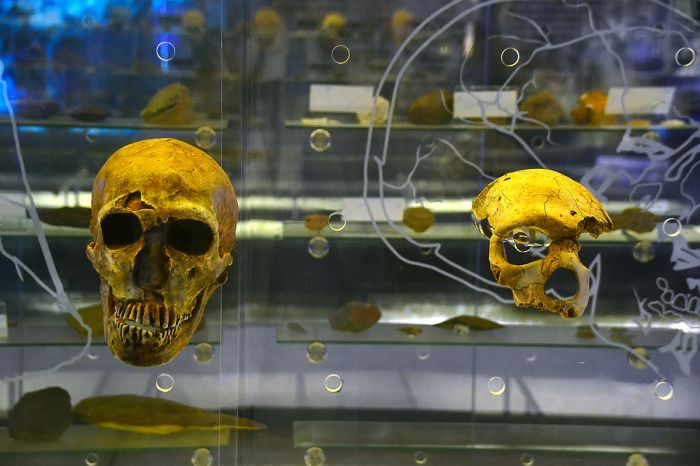
Skulls on display at Cradle of Humankind museum
The superb Maropeng Visitors' Centre provides a visually compelling insight into mankind's history and the paleontological sites in progress via interactive exhibits.
Various sites in the region have yielded famous finds, including Mrs Ples, a 2.1-million-year-old Australopithecus skull. New discoveries continue to be uncovered, providing more information about the roots of Homo sapiens.
The COH is an easy drive from Joburg and well worth the time to explore it for a few hours.
North West Province
Pilanesberg Game Reserve and the Sun City resort complex are located in South Africa's North West Province, but are included here due to their geographic proximity to the Gauteng Province.
Pilanesberg Game Reserve
The 572-sq-km (221-sq-mile), malaria-free, Pilanesberg Game Reserve (previously a national park) is located inside the massive caldera of a long-extinct volcano, which last erupted some 1.2 billion years ago and may have then been the highest peak in all of Africa.
The reserve was created in the 1979 as a weekend escape mainly for locals living in Johannesburg. The crater had been used as agriculture for many decades but Operation Genesis purchased the land, enclosed it with a fence, and introduced some 6 000 animals into the park.
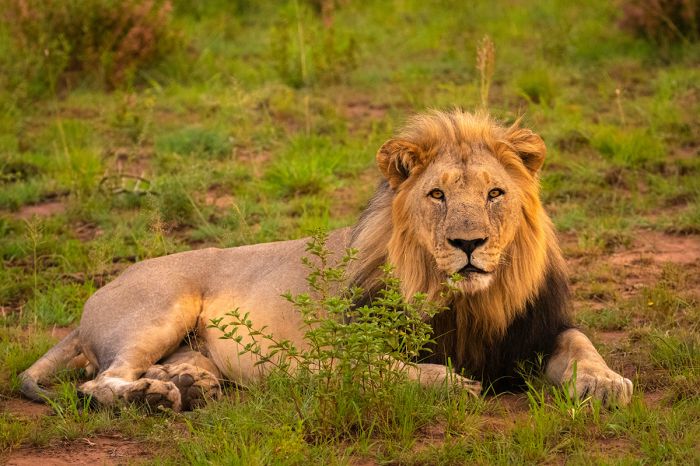
A male lion in the Pilanesberg Game Reserve
All of Africa's Big Five animals (lion, leopard, rhino, elephant, buffalo) are here, plus African wild dog, brown hyena, cheetah, zebra, giraffe, oryx, hippo, crocodile and a diverse array of antelope species. It is one of the best places in the country to see both black and white rhino species. Birding in Pilanesberg is excellent.
The reserve allows for self drive safaris (like Kruger National Park) but guided tours can also be booked. There are also some very good safari camps located in the reserve. The Sun City resort and entertainment complex is located just outside the southern edge of the reserve.
For full information on Pilanesberg, click here.
Sun City
Sun City is a huge resort and entertainment complex located on the southern border of Pilanesberg National Park in the crater of a massive and ancient volcanic caldera.
It was created in 1979 by the legendary Sol Kerzner (who also built the Atlantis resorts in the Bahamas and Dubai) as a weekend getaway for Apartheid-era white South Africans living in nearby Johannesburg. Today Sun City still attracts thousands of tourists and locals of all ethnic backgrounds.
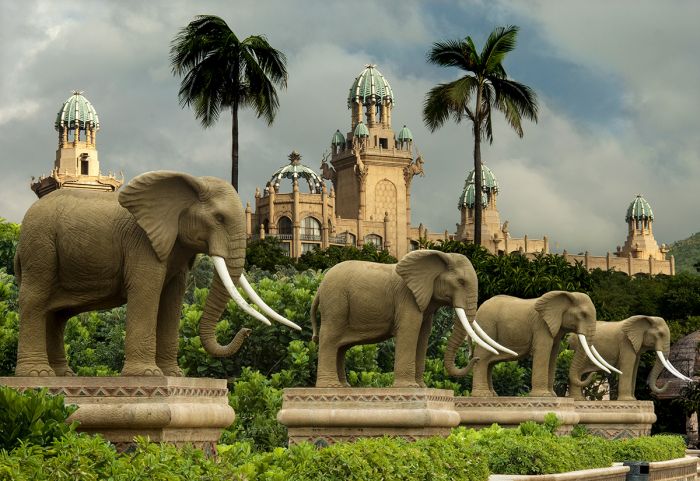
Palace of the Lost City Hotel at Sun City
The resort contains four luxury hotels with over 1 200 rooms, a casino, two 18-hole golf courses (Gary Player Country Club and Lost City Golf Course, both designed by Gary Player), and the Valley of Waves (a huge man-made beach and body-surfing water park).
Sun City's location just outside of Pilanesberg Game Reserve adds to its allure and the resort has consistently won awards for its environmentally sustainable tourism.
For full information on Sun City, click here.
The Magaliesberg
The Magaliesberg are a range of low mountains and hills that form an arc spanning 120 kms (75 miles) between Rustenburg in the west to Hartebeestpoort Dam in the east. The region offers natural beauty in the form of grasslands, waterfalls, rolling hills, and rock formations.
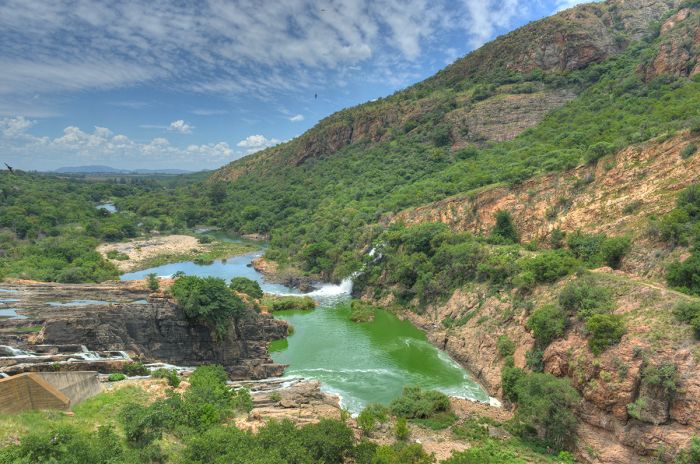
Waterfall at Hartebeestpoort Dam, Magaliesberg
Outdoor activities are the main attraction and include hiking, zip lining, mountain biking, and horseback riding. Water sports of all types are on offer at the Hartebeestpoort Dam and it is a favorite weekend destination for locals from Joburg and Pretoria. The Harties Cableway carries visitors to the top for breathtaking panoramic views.
Ann Van Dyk Cheetah Centre
The Ann Van Dyk Cheetah Centre (also known as the De Wildt Cheetah and Wildlife Centre) is a captive breeding facility for cheetahs, located on what was once Ms. van Dyk's parents' chicken farm in the Magaliesberg.
Created in 1971, the centre is widely credited for helping save South Africa's cheetahs from near extinction and their eventual removal from the Red Book of endangered animals. Other endangered species being bred here include the African wild dog, brown hyena, Suni antelope, duiker, Cape vulture, and riverine rabbit.
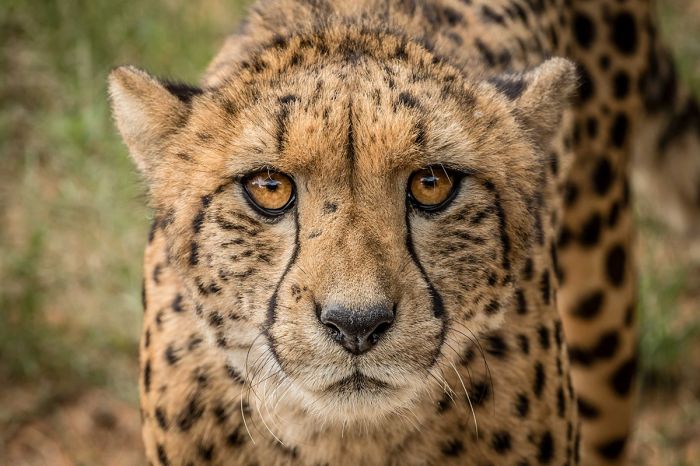
A cheetah at the De Wildt Cheetah and Wildlife Centre
Read More...
Ann Van Dyk Cheetah Centre, Cradle of Humankind, Johannesburg, Magaliesberg Mountains, North West Province, Pilanesberg Game Reserve, Pretoria, Sun City
Great Good Fair Poor
- Jan
- Feb
- Mar
- Apr
- May
- Jun
- Jul
- Aug
- Sep
- Oct
- Nov
- Dec
Summers (November thru March) have average high temperatures of 78°F (25°C), with rains that falling as late afternoon or early evening showers or thunderstorms. The majority of annual rainfall comes during the summer months. The days are usually sunny and warm, with high temperatures not typically exceeding 86°F (30°C). Nighttime temperatures are cool, dropping to around 57°F (14°C).
Winters (May thru August) are very comfortable and rainfall is unusual. Average daytime temps are around 65°F (18°C). Overnight temperatures are chilly, sometimes dropping to almost freezing. June and July experience the coldest temperatures.
Temps in the higher elevations of the Magaliesberg will be somewhat cooler than the cities of Pretoria and Joburg.
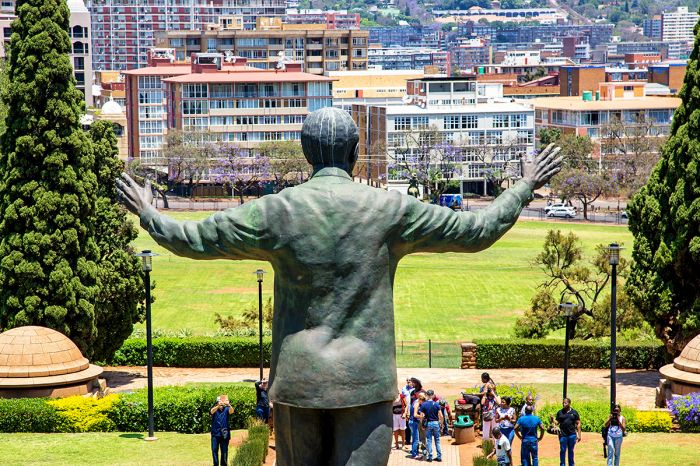
Statue of Nelson Mandela and Pretoria's Union Buildings




